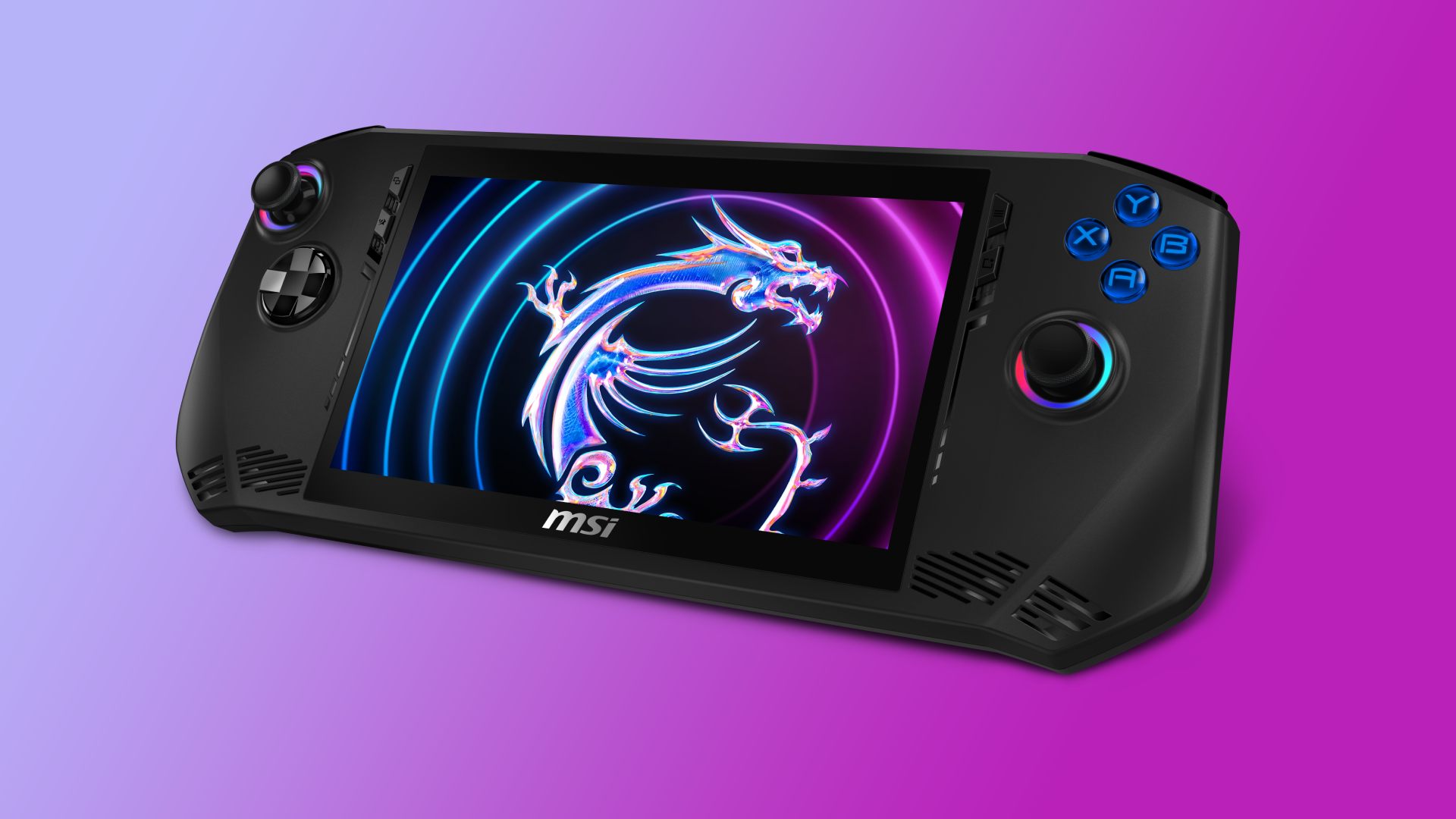MSI Claw struggles against Asus ROG Ally in early benchmarks, but don’t write the handheld off just yet
MSI's handheld could sharpen its claws

The MSI Claw hasn’t officially released yet, but enthusiasts and media outlets are already putting the handheld PC to the test. Naturally, the early benchmarks pit the portable against its uncanny rival, the Asus ROG Ally, and while performance falls short, I reckon it’s worth waiting for the dust to settle.
In a way, the MSI Claw is late to the best gaming handheld race. By that, I mean that devices by other laptop makers like the Asus ROG Ally and Lenovo Legion GO are already tearing up the track, even if the Steam Deck is still winning in terms of popularity. Considering that MSI has effectively had a chance to come up with a strategy to combat the other contenders, it’s perhaps surprising to hear that it can’t outrun its closest rival. However, the Claw does come armed with an Intel Arc APU rather than a tried and true AMD Ryzen chip, which may explain the shortcomings I’m about to dive into.
Highlighted by Videocards, the early MSI Claw benchmarks come courtesy of hardware reviewers on the Chinese site Bilibili. Collated test data across gutsy PC games like Cyberpunk 2077, Shadow of the Tomb Raider, Red Dead Redemption 2, and Resident Evil suggests that the Claw can’t boost fps beyond that of the ROG Ally, with gaps as wide as 13fps. Here’s a closer look at each figure:
| Game | MSI Claw | Asus ROG Ally | Settings |
| Cyberpunk 2077 | 44.8fps | 59.8fps | 900p, low preset, FSR and XeSS on |
| Shadow of the Tomb Raider | 49fps | 53fps | 720p, high preset |
| Red Dead Redemption 2 | 49.2fps | 60.2fps | 900p, low preset, FSR 2.1 on |
| Resident Evil | 21-53fps | 51-68fps | 900p, low preset, |
The results above are based on the MSI Claw and ROG Ally running at max TDP. That should mean that the Claw is running at 40W while the Ally is set to 30W, which sort of adds salt into the performance wound. Additional tests also include results for TDP levels all the way down to 15W in Shadow of the Tomb Raider, and the Claw actually fares worse with an average of 24fps vs 42fps at 720p high settings.
So, what should the takeaway be from these early MSI Claw results? Well, I wouldn’t blame you for thinking it lacks the oomph required to take on the ROG Ally and Legion GO. There’s also a chance these figures will match up pretty closely to my own when I eventually get my claws on the new handheld, but I’m also wary that Intel Arc chipsets can get better over time.
I’m not saying you should have to wait a chunk for an APU or GPU to catch up with its competition, but if the Intel Arc A770 is anything to go by, the chip within the MSI Claw could mature into something special. Intel has been pretty consistent in improving its graphics card drivers since it landed in the GPU scene in 2022, and its entry-level card has swiftly become one of the best bang for buck options out there thanks to subsequent support.
With any luck, the Intel Core Ultra 7 155H chip within the MSI will improve both as we approach the handheld’s official release date and thereafter. That’s not to say I think it’ll magically gain the ability to outflank mighty chipsets like the Ryzen Z1 Extreme, but I’d like to see the scene get a little bit more competitive when it comes to processor choices.
Sign up to the GamesRadar+ Newsletter
Weekly digests, tales from the communities you love, and more
Already got a portable PC? Check out the best Steam Deck dock and transform your handheld into a desktop hybrid. Alternatively, swing by the best gaming laptops and best gaming PCs for a selection of beefier machines.

I’ve been messing around with PCs, video game consoles, and tech since before I could speak. Don’t get me wrong, I kickstarted my relationship with technology by jamming a Hot Wheels double-decker bus into my parent’s VCR, but we all have to start somewhere. I even somehow managed to become a walking, talking buyer’s guide at my teenage supermarket job, which helped me accept my career fate. So, rather than try to realise my musician dreams, or see out my University degree, I started running my own retro pop culture site and writing about video games and tech for the likes of TechRadar, The Daily Star, and the BBC before eventually ending up with a job covering graphics card shenanigans at PCGamesN. Now, I’m your friendly neighbourhood Hardware Editor at GamesRadar, and it’s my job to make sure you can kick butt in all your favourite games using the best gaming hardware, whether you’re a sucker for handhelds like the Steam Deck and Nintendo Switch or a hardcore gaming PC enthusiast.


